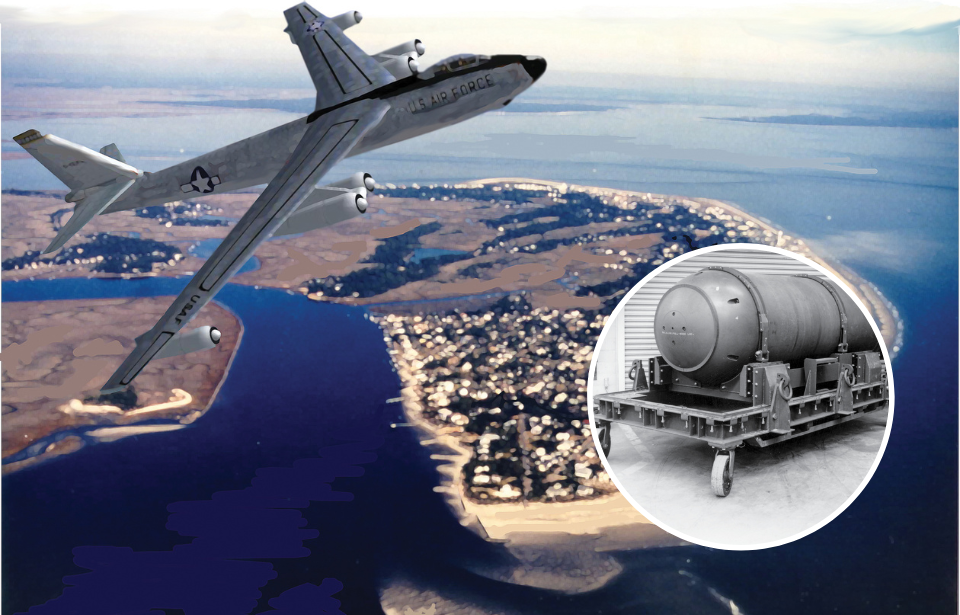During a U.S. Air Force training mission in the 1950s, a grave accident led to the unintentional drop of a Mark 15 nuclear bomb into the waters off Tybee Island, near Savannah, Georgia. The bomb sank to the bottom of Wassaw Sound, where it has remained undisturbed for decades. Its presence has sparked ongoing debate over whether it should be retrieved or left where it lies—each choice carrying serious risks.
What makes the matter even more alarming is the uncertainty surrounding the bomb’s current state. Early accounts suggested that its nuclear core had been removed before the flight, but conflicting evidence has cast doubt on whether the weapon might still be armed. Without definitive answers, the Mark 15 continues to pose a potential hazard, its true condition and the danger it may present still a mystery.
Mid-air collision over Tybee Island
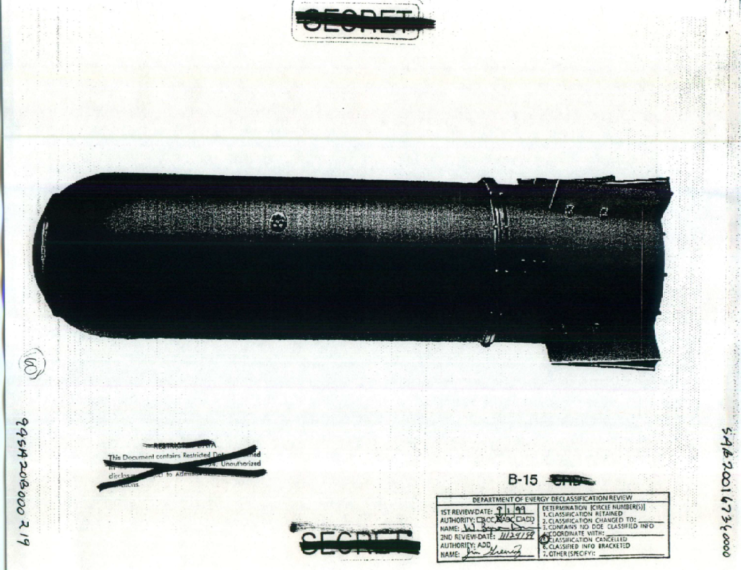
On February 5, 1958, while performing a simulated combat mission exercise, a Boeing B-47 Stratojet was involved in a mid-air collision with a North American F-86 Sabre. The B-47, having taken off from Homestead Air Force Base, Florida, was carrying a two-man crew, as well as a 7,600-pound Mark 15 nuclear bomb.
The F-86’s pilot, Lt. Clarence Stewart, hadn’t seen the B-47 on his radar and descended directly on top of it. The crash between the two caused the left wing of the fighter jet to completely rip off, while the bomber’s fuel tanks suffered heavy damage. Stewart was able to eject before his aircraft crashed, while the pilot of the B-47, Lt. Col. Howard Richardson, sought the closest landing base. Despite the damages to the bomber, the B-47 remained airborne. After dropping 18,000 feet, Richardson regained control.
As for the nuclear bomb onboard the aircraft, he granted the crew’s request to jettison it, to prevent it from exploding during the emergency landing. The bomb was dropped from 7,200 feet, over the shores of Tybee Island. The pilot and crew reported no explosion upon it meeting the water, and they were able to successfully land the damaged B-47 at Hunter Army Airfield, Georgia.
For his actions, Richardson was awarded the Distinguished Flying Cross.
A search force was sent to find the bomb
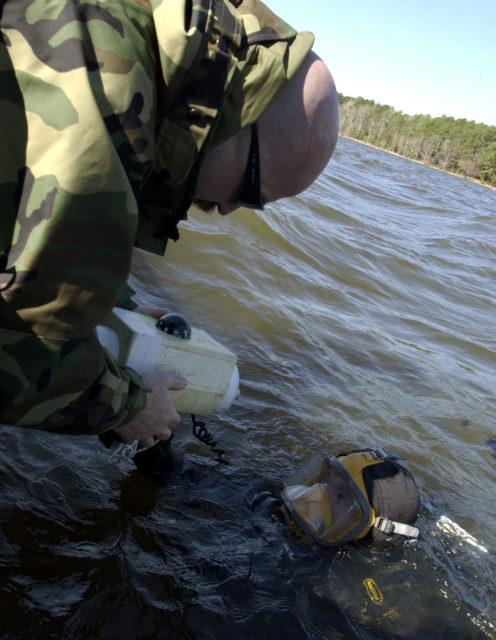
In the aftermath of the accident, an extensive recovery mission was launched to locate the missing Mark 15 nuclear bomb. Spearheaded by the U.S. Air Force’s 2700th Explosive Ordnance Disposal Squadron and backed by roughly 100 Navy sailors, the team focused their efforts on the waters surrounding Tybee Island, especially in Wassaw Sound. For close to 10 weeks, searchers used handheld sonar devices and drag cables to systematically sweep the ocean floor.
Despite their thorough work, the military declared on April 16 that the bomb remained lost.
Years later, in 2001, a Department of Energy hydrographic survey offered fresh insights. The study indicated that the bomb could be entombed beneath five to 15 feet of sediment on the seabed, narrowing the potential search area and reigniting hope that the elusive weapon might one day be recovered.
Was the Mark 15 nuclear?
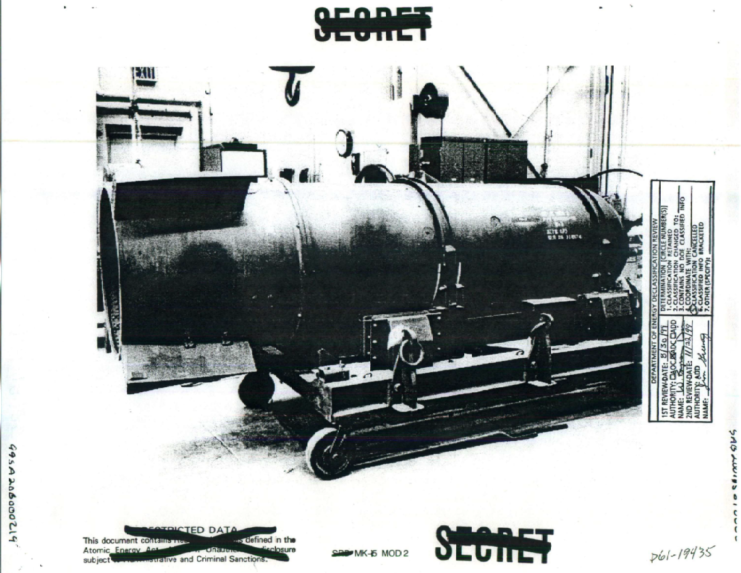
Since it went missing, experts have argued over whether the bomb off Tybee Island was actually nuclear. If it had a plutonium core, it would have been a complete nuclear weapon. If not, it likely had a dummy core—meaning it couldn’t trigger a nuclear blast but could still cause a powerful conventional explosion.
The Air Force claimed the bomb’s nuclear capsule had been removed before the flight and replaced with a 150-pound lead dummy. Internal documents from Strategic Air Command backed this up, stating that test flights in February 1958 weren’t cleared to carry nuclear-armed bombs.
That explanation stood for decades—until 1994. A newly declassified document included a 1966 Congressional testimony from W.J. Howard, then Assistant Secretary of Defense. In it, Howard directly contradicted the Air Force’s public stance. He told the Joint Committee on Atomic Energy that the Tybee bomb was, in fact, “a complete, fully functional bomb with a nuclear capsule” that included a plutonium trigger.
If Howard’s testimony is true, the bomb could still be extremely dangerous. A detonation would create a fireball over a mile wide and thermal radiation that could be felt up to 10 miles away.
Yet another search is launched

Armed with updated data, Air Force veteran Lt. Col. Derek Duke privately conducted a new search for the missing nuclear bomb in 2004. Alongside his team, they meticulously explored the Wassaw Sound area, using a Geiger counter to measure radiation levels in the water.
Their efforts revealed that radiation levels near the peak of Tybee Island were significantly elevated, about four times higher than normal, potentially indicating the presence of the Mark 15 if it was indeed nuclear. By pinpointing these areas of heightened radiation, they could narrow down and map a zone roughly the size of a football field.
However, later Air Force analysis of the site concluded that the increased radiation came from natural sources, particularly monazite deposits in the sand. Consequently, the exact location of the elusive Mark 15 remains unresolved.
Best to leave the nuclear bomb alone
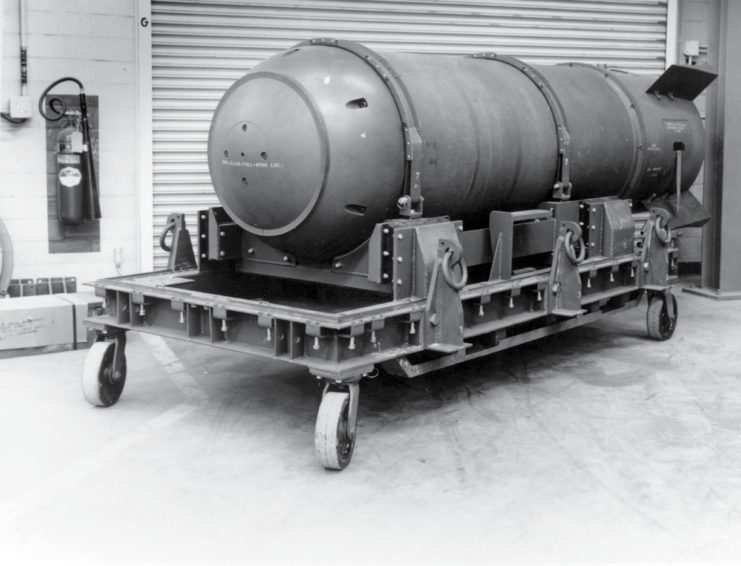
The Air Force is content with leaving the bomb’s location a mystery, and officials have assured residents in the surrounding area that it poses no threat, so long as it’s left alone. An “intact explosive would pose a serious explosion hazard to personnel and the environment if disturbed by a recovery attempt,” they stated.
More from us: Mars Bluff Incident: The US Air Force Accidentally Dropped a Nuclear Bomb on South Carolina
The next time you go diving near Tybee Island, keep an eye out for the 12-foot long, 7,600-pound Mark 15 nuclear bomb with the serial number 47782. If you spot it, leave the sleeping beast alone!
